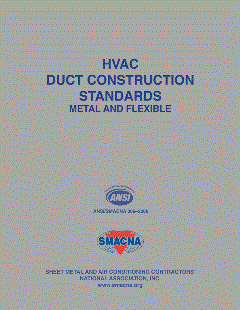The perpetual showering of corrosion and paint flakes from a church's recreation center’s HVAC metal duct was an ongoing maintenance annoyance. However, the real challenge for Park Hill Baptist Church was the $100,000-plus price tag to replace the system.
After several unsuccessful recoating attempts, replacing the Christian Activities Center’s (CAC) duct was the only logical solution. The gray-coated, 26-inch-diameter, double-wall spiral duct had become a dented, dirty, flaking eyesore for the North Little Rock, Arkansas-based, 1,500-member church. Besides improved aesthetics and reduced maintenance, replacement also promised enhanced IAQ as well as better temperature control and comfort.
Jeff Carson, facility manager, estimated a new metal duct system cost at more than $100,000 for demolition and installation labor/materials. Replacement with metal duct would also require a lengthy weeks-long downtime for the former gymnasium that was recently converted to a busy multi-use space. Stripping years of unsuccessful recoats, priming, and applying another coating was a less expensive alternative but would have required longer downtimes than new metal duct replacement.
After seeing fabric duct in local athletic facilities and churches, Carson priced a system manufactured by FabricAir for the 37-year-old CAC, which is amid a three-year renovation phase that includes LED lighting, a new kitchen, a stage, and other improvements.
“We were always disappointed with the CAC’s metal duct performance,” said Carson, who came to the church in 1998 after a previous career in the heavy industry market. “After witnessing the improved temperature uniformity and the great look of fabric duct at newer nearby gyms and churches, we were sold on the concept.”
While a metal duct replacement would have required an outside contractor, Carson and his three-man maintenance staff undertook the metal duct demo and fabric duct installation themselves.
“All we needed was a scissors lift rental because we felt we could install the fabric duct ourselves,” said Carson.
The installation of an aluminum H-track suspension system to the steel beams of the building’s 30-foot-high ceiling required only beam clamps. After suspension system installation, Carson’s team and Tom Boothe, regional sales manager, FabricAir, remeasured the duct sizing, which is recommended by the factory’s engineering dept. The 28-inch-diameter Combi 70 black fabric duct was custom manufactured and shipped to the church, and the installation required only a few hours of sliding its clips into the H-track suspension system and zippering lengths together. All totaled, the fabric duct cost the church less than $10,000 for materials, with a great savings coming from an in-house staff installation.
The fabric air dispersion was designed as two straight, 75-foot-long runs through the center of the CAC, which required less linear feet of duct due to the design change from the original horseshoe-shaped metal duct’s more expansive, less efficient perimeter configuration. Instead of metal registers every 12 feet, approximately 85% of the airflow is dispersed through linear arrays with approximately 2-inch-diameter orifices positioned at 4, 5, 7, and 8 o’clock on the entire length of each duct. Instead of large volumes of air from single metal duct registers, the linear orifices disperse the same air volume but in even, uniform patterns. Dust and condensation accumulation are prevented by the remaining 15% air that flows through the fabric’s factory-engineered permeability.
The two fabric runs were connected to the original metal supply takeoffs of the existing Coleman and Trane 20-ton packaged rooftop units. Factory engineering designed two 45-degree fabric elbow offsets to circumvent obstacles. Using fabric versus custom-fabricated metal offsets saved the project approximately $7,000.
The facility’s two original return grills mounted near the ceiling continue to provide recirculation to the rooftop units.
The church saved upwards of $100,000 on its duct retrofit and is also experiencing improved environmental conditions for its occupants and its maple hardwood floor.






